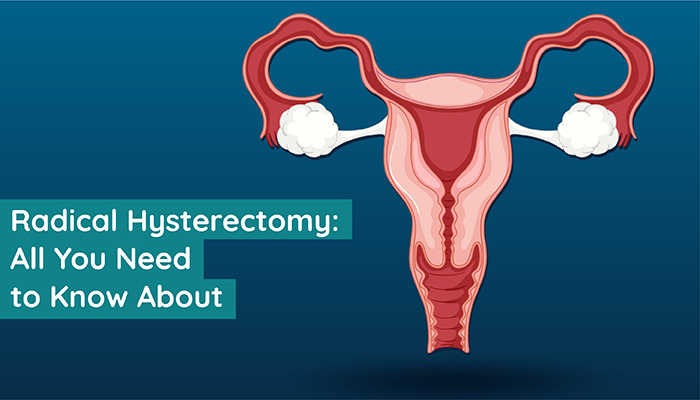Radical hysterectomy is a surgical procedure that involves the removal of the uterus along with the cervix, tissues surrounding the uterus, and the upper part of the vagina. It is usually performed in cases of cervical cancer, endometrial cancer or ovarian cancer. The procedure can be done through an open incision or minimally invasive laparoscopic surgery. In this blog, we will discuss the procedure, risks, and benefits of radical hysterectomy.
The Procedure
Before the procedure, the patient is given general anesthesia to ensure that they are asleep and do not feel any pain. Once the patient is under, the surgeon will make an incision in the abdomen or use laparoscopic tools to make small incisions in the abdomen. The uterus, cervix, and upper vagina will be removed, along with any cancerous tissue that may be present. This may also involve the removal of lymph nodes in the surrounding area to check if the cancer has spread. The procedure can take several hours, and the patient may need to stay in the hospital for a few days.
Risks and Complications
As with any surgery, there are some risks and complications that can arise during a radical hysterectomy. These might include:
– Infection or bleeding
– Injury to nearby organs
– Blood clots or pulmonary embolism
– Anesthesia risks
– Bowel obstruction
– Pelvic pain or discomfort
– Infertility
Benefits
The primary benefit of a radical hysterectomy is to remove cancerous tissue and prevent it from spreading. Radical hysterectomy is often recommended for women diagnosed with cervical, ovarian, or endometrial cancer. This procedure can be life-saving and significantly reduce the chance that the cancer will return. In some cases, a radical hysterectomy may also help relieve symptoms such as abnormal bleeding or pain during sex.
Recovery and Follow-up CareThe length of recovery time will depend on the type of surgery and the patient’s overall health. Patients who undergo an open incision procedure may require several weeks to recover fully. Those who have had a minimally invasive laparoscopic surgery may recover quicker. After the procedure, the patient will have to take precautions to avoid straining the pelvic muscles or lifting heavy objects for several weeks.
Follow-up care is essential to ensure that the cancer has not returned or spread. This may involve regular check-ups, imaging scans, and blood tests, depending on the type of cancer and the patient’s medical history.
In conclusion, radical hysterectomy is a surgical procedure used to treat cancer of the cervix, ovaries, or uterus. It involves the removal of the cervix, uterus, and surrounding tissues and may be performed with an open incision or minimally invasive laparoscopic surgery. The primary goal of the procedure is to remove cancerous tissue and prevent the cancer from spreading. While there are risks associated with this surgery, the benefits of radical hysterectomy often outweigh the risks. Patients should discuss their options with their healthcare provider and follow-up with regular checkups to ensure the cancer has not returned.

